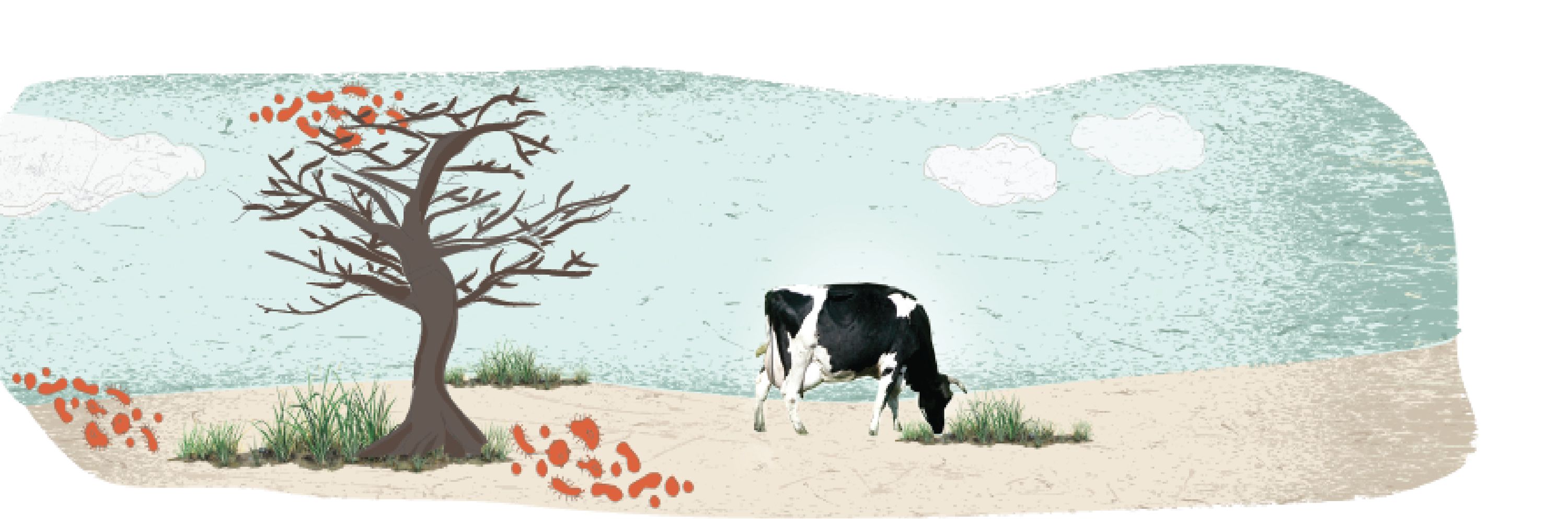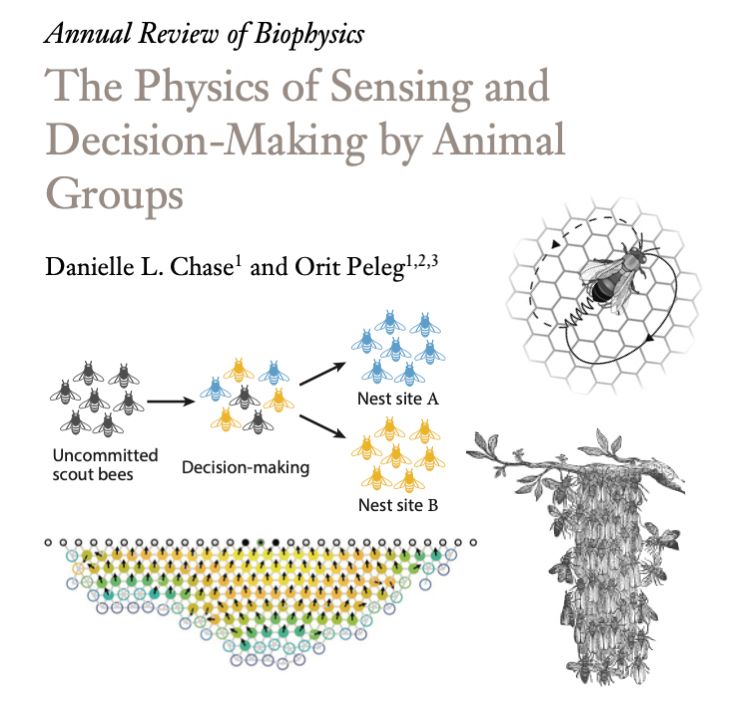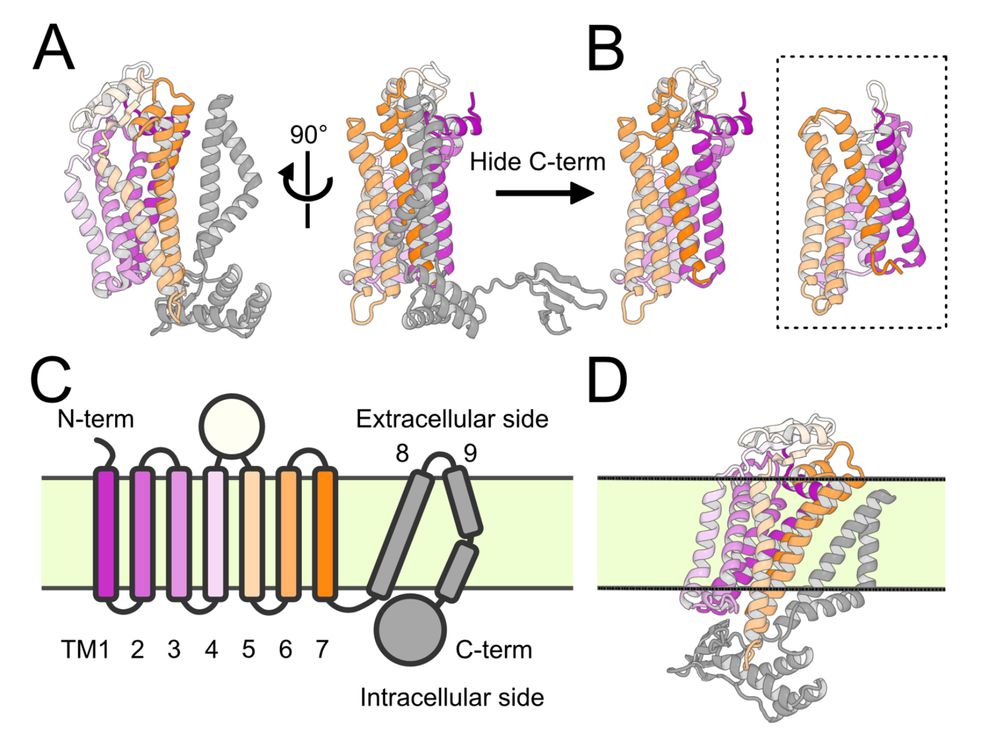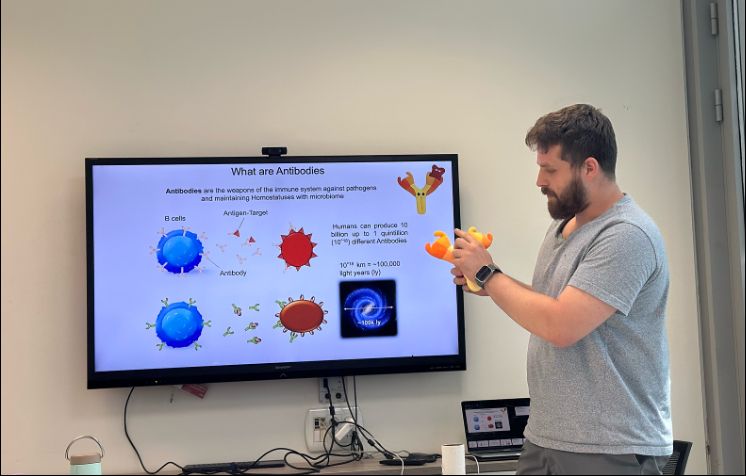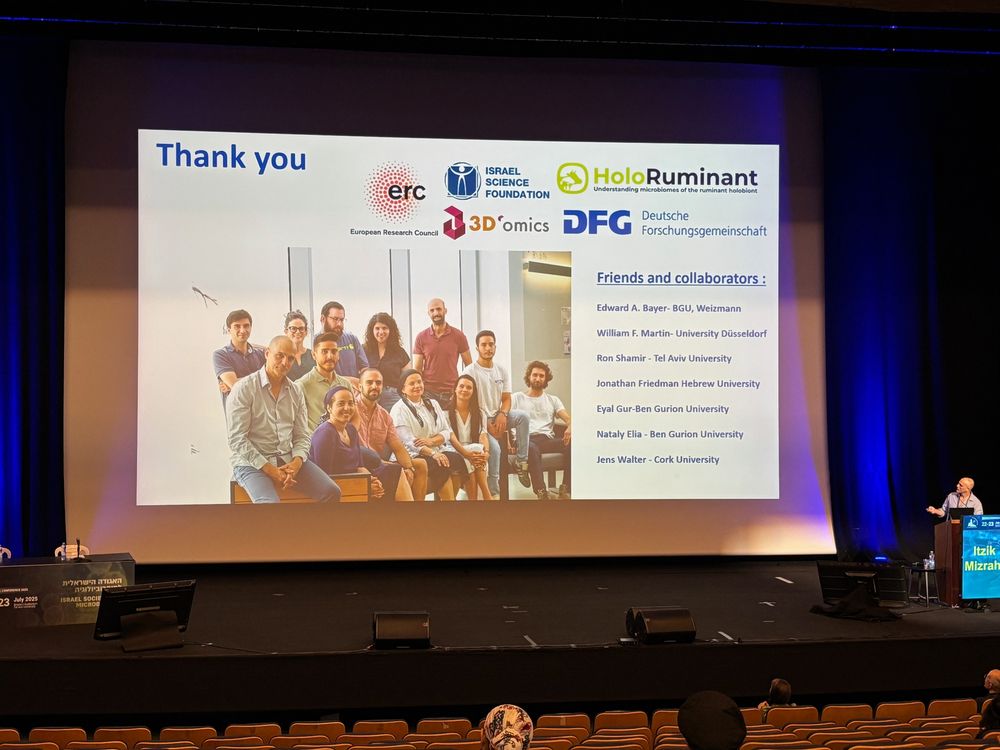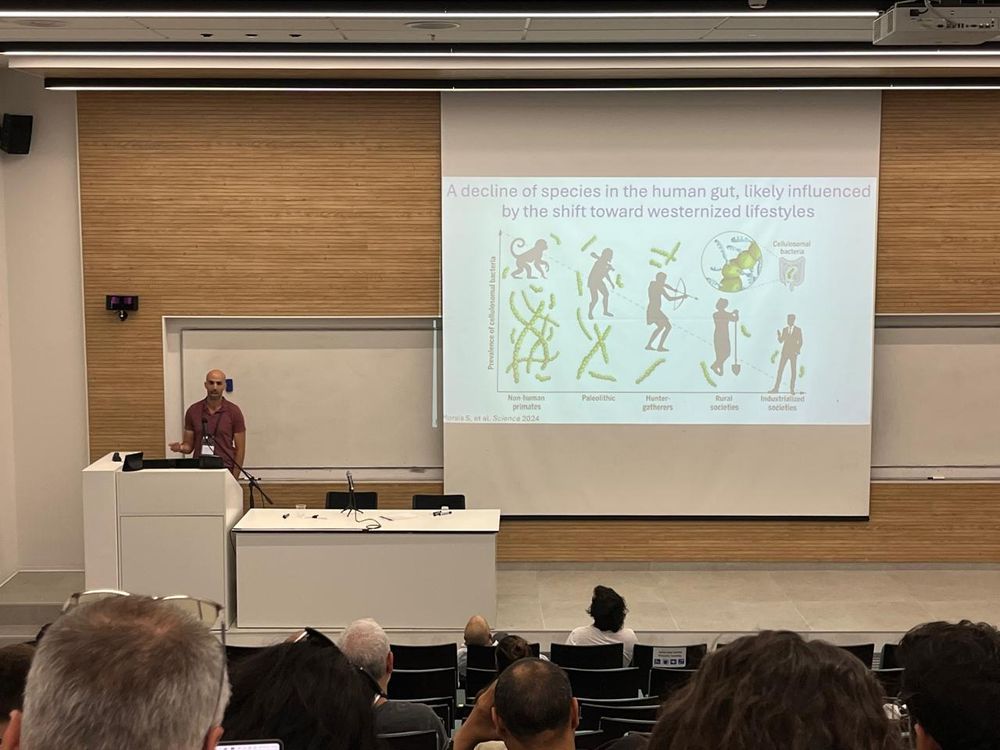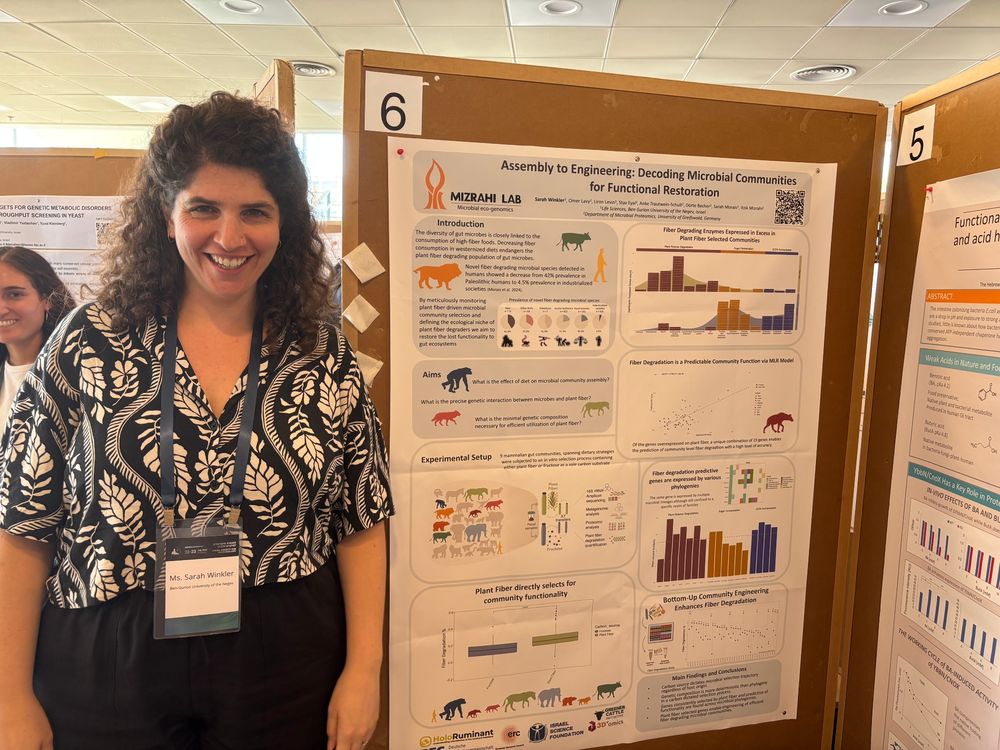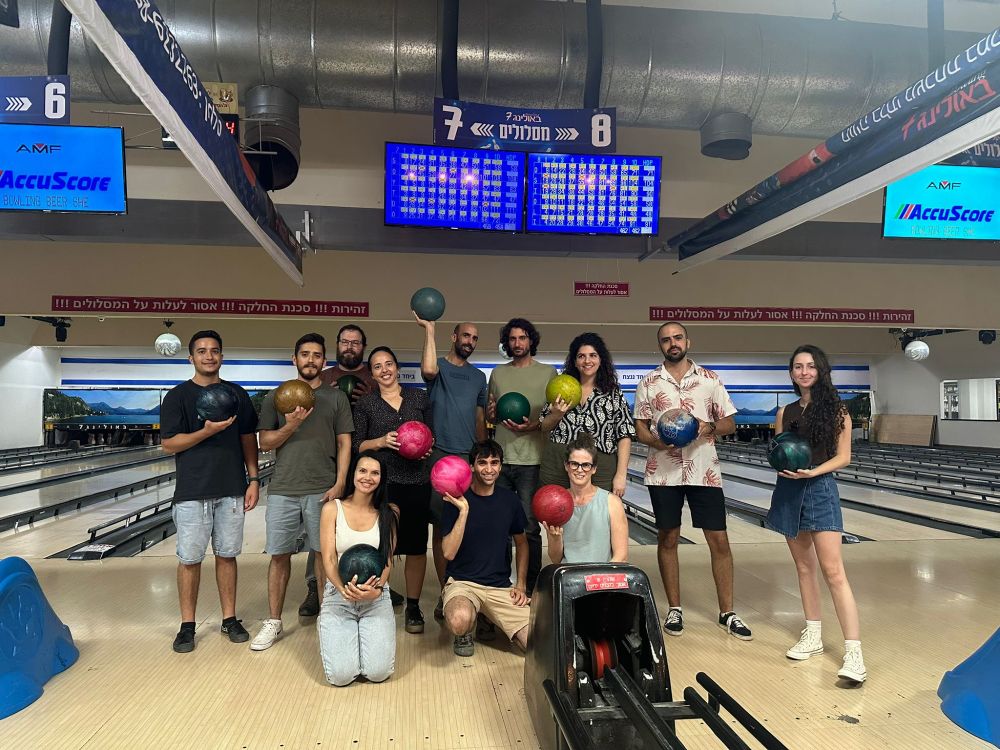Mizrahi Lab
@mizrahilab.bsky.social
110 followers
89 following
39 posts
We are involved in understanding the ecological and evolutionary forces that shape microbial communities in nature.
Visit our website - lifewp.bgu.ac.il/wp/imizrahi/
Twitter - https://x.com/LabMizrahi
Posts
Media
Videos
Starter Packs
Reposted by Mizrahi Lab
Mizrahi Lab
@mizrahilab.bsky.social
· Sep 3

misosoup: A metabolic modeling tool for identifying minimal microbial communities reveals pervasive cross-feeding–driven niche expansion
Microbial survival and function often depend on metabolic interactions within communities. Therefore, a central question to disentangle microbial organization is what minimal groups of species are abl...
www.biorxiv.org
Reposted by Mizrahi Lab
John M. Drake
@jdrakephd.bsky.social
· Aug 21

Why are there so few pathogens? Ecology and evolution in pathogen emergence
Why are there so few pathogens, and what determines their emergence? This Perspective argues that ecological and evolutionary forces (host availability, geographic exposure and microbial innovation) w...
journals.plos.org
Mizrahi Lab
@mizrahilab.bsky.social
· Aug 13

Applying ecological principles to microbiome engineering - Nature Microbiology
This Perspective discusses the application of ecological principles of macro-ecosystems to microbiome engineering. The authors propose research priorities necessary to facilitate the application of th...
www.nature.com
Mizrahi Lab
@mizrahilab.bsky.social
· Aug 12
Reposted by Mizrahi Lab
Mizrahi Lab
@mizrahilab.bsky.social
· Aug 10

Structural insights into light harvesting by antenna-containing rhodopsins in marine Asgard archaea - Nature Microbiology
Uncultured open-ocean Asgard archaea can harvest light energy using rhodopsins and diverse hydroxylated carotenoid antennas.
www.nature.com
Reposted by Mizrahi Lab
Mizrahi Lab
@mizrahilab.bsky.social
· Jul 17

Intraspecies warfare restricts strain coexistence in human skin microbiomes - Nature Microbiology
About 15,000 pairwise interactions within S. epidermidis from 18 people in 6 families reveal the antagonism and molecular trade-offs that shape the skin microbiota.
www.nature.com
